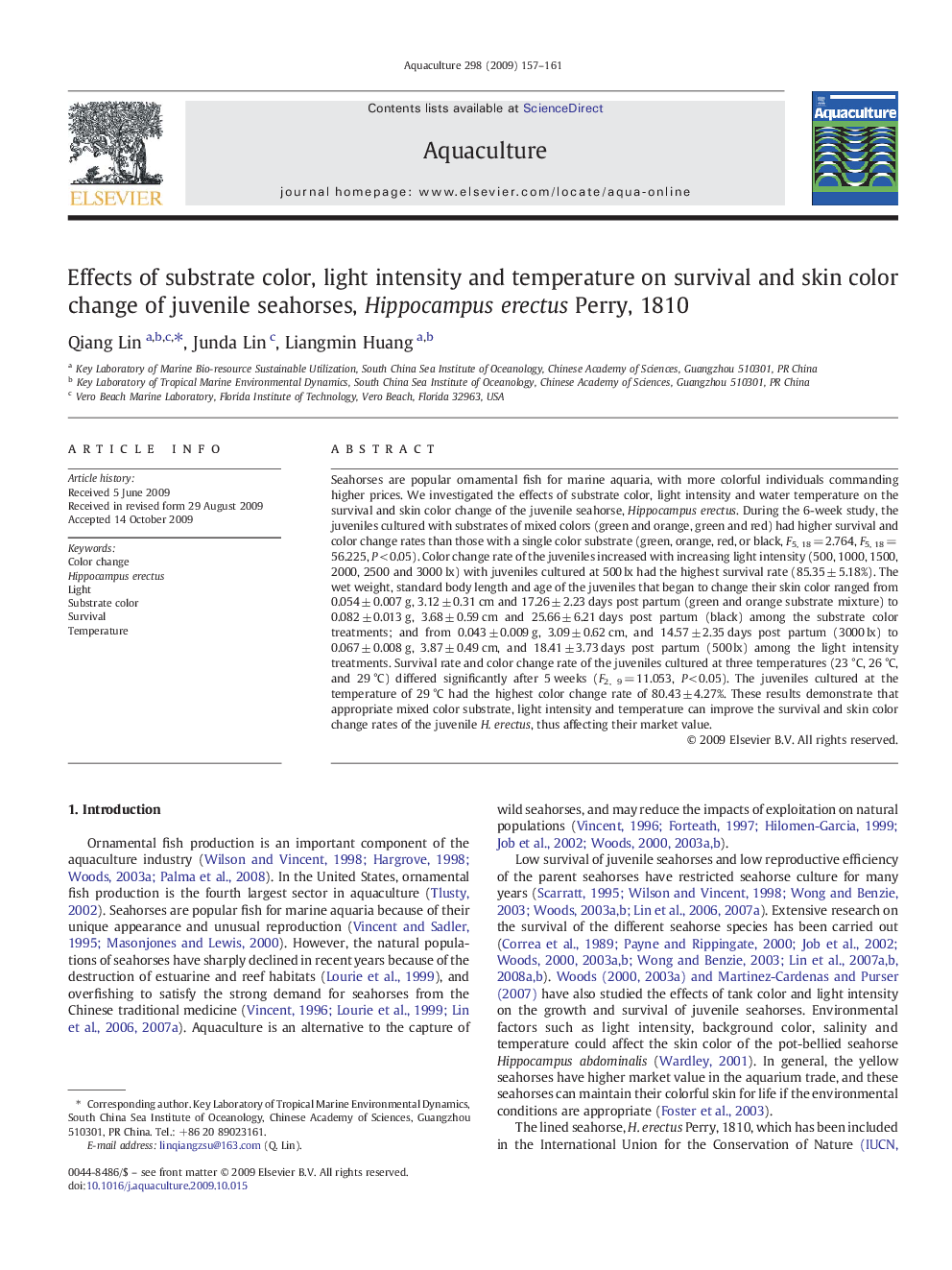| Article ID | Journal | Published Year | Pages | File Type |
|---|---|---|---|---|
| 2423837 | Aquaculture | 2009 | 5 Pages |
Seahorses are popular ornamental fish for marine aquaria, with more colorful individuals commanding higher prices. We investigated the effects of substrate color, light intensity and water temperature on the survival and skin color change of the juvenile seahorse, Hippocampus erectus. During the 6-week study, the juveniles cultured with substrates of mixed colors (green and orange, green and red) had higher survival and color change rates than those with a single color substrate (green, orange, red, or black, F5, 18 = 2.764, F5, 18 = 56.225, P < 0.05). Color change rate of the juveniles increased with increasing light intensity (500, 1000, 1500, 2000, 2500 and 3000 lx) with juveniles cultured at 500 lx had the highest survival rate (85.35 ± 5.18%). The wet weight, standard body length and age of the juveniles that began to change their skin color ranged from 0.054 ± 0.007 g, 3.12 ± 0.31 cm and 17.26 ± 2.23 days post partum (green and orange substrate mixture) to 0.082 ± 0.013 g, 3.68 ± 0.59 cm and 25.66 ± 6.21 days post partum (black) among the substrate color treatments; and from 0.043 ± 0.009 g, 3.09 ± 0.62 cm, and 14.57 ± 2.35 days post partum (3000 lx) to 0.067 ± 0.008 g, 3.87 ± 0.49 cm, and 18.41 ± 3.73 days post partum (500 lx) among the light intensity treatments. Survival rate and color change rate of the juveniles cultured at three temperatures (23 °C, 26 °C, and 29 °C) differed significantly after 5 weeks (F2, 9 = 11.053, P < 0.05). The juveniles cultured at the temperature of 29 °C had the highest color change rate of 80.43 ± 4.27%. These results demonstrate that appropriate mixed color substrate, light intensity and temperature can improve the survival and skin color change rates of the juvenile H. erectus, thus affecting their market value.
